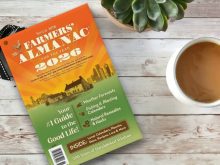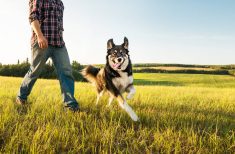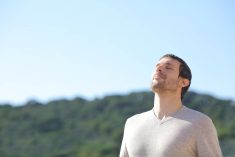For those of us who stay in Canada for the winter, seasonal shifts in light, weather and nutrition often take a toll. Many Canadians notice changes in their overall wellbeing through the winter months, both physically and mentally.
Part of this shift in our overall quality of well-being in the winter likely comes from our human culture’s way of moving against our natural environment’s signals. Most other mammals take the winter to downshift in energy output. If not outright hibernating, they operate alongside available daylight and energetic resources for necessary tasks. Humans, on the other hand, keep on keeping on, with energetic outputs that far exceed the natural light and energy resources we have access to in the winter months.
READ MORE: Check out Daniel Bezte’s weekly Prairie weather forecasts
Read Also

Gentle treatments for pain in the neck
Heading toward year-end, people unknowingly tense up against the cold and busyness, causing neck pain that can often be treated with appropriate support and gentle mobility, athletic therapist Kathlyn Hossack says.
To make it through winter in wellness, consider ways to best serve our bodies during the darker, colder season.
Permission for more rest
We like to imagine we can, but even we humans can’t function at the same level of intensity and productivity all year round. Just as the seeds we plant in the fall take their time to germinate for spring crops, and other fields rest through the winter, so too must we. Where you can, allow for slower rising in the mornings and slow down sooner in the evenings, a simple way to follow the seasonal influences around us.
Restorative movement
Many methods out there function off a restorative principle — but ‘restorative’ to me means a bit more of a focus on slowness, restful postures and gentle practices that still help to support circulation (a.k.a. our inner warmth), joint health and mental/emotional well-being through body-based practices.
Yin yoga, restorative yoga, qigong, tai chi, dance classes, slow flow yoga and mobility classes are all based in traditional restorative movements. Use any of those as search terms on YouTube and you’ll find some great free resources to use this season from the comfort of home. Most community centres, active living centres and fitness centres will also have options for such classes.
You could also apply the medicine of slowness to any existing movement practices you have: take more rest time between sets of exercises; slow down your usual stretches; or integrate a couple of extra mobility practices to your day on waking and as you wind down for the evenings, to support deeper rest and easier wake cycles this winter.
Warming foods and practices
Our most traditional wellness practices place emphasis on warmth as much as possible in seasons of coldness. If it’s cold outside, spending as much time in warm environments inside, and cultivating inner warmth, is important. Warming foods mean mining your spice cupboard well, integrating ginger, cinnamon, cayenne, chili, rosemary, cumin, pepper and sage wherever you can — especially into traditionally “warm” foods such as soups, stews or chilis. These foods also help us to bolster hydration, mineral and vitamin content and overall nutrition for a season that puts higher demand on our biological systems.
Warming practices also include the use of warm baths, longer showers, or taking any access to saunas and hot tubs you may have. At home, heating packs made from flax or wheat, hot water bottles and wood stoves are also excellent resources for warmth. Coziness is not just for comfort this time of year; consider it a necessary part of your health and wellness.
As always, if seasonal shifts in wellbeing, mood or physical health impact your ability to meaningfully engage in your life, please reach out to your local healthcare providers and allied health services for support. In long, dark and cold seasons, it’s imperative we connect to those in our communities with resources to support us.















